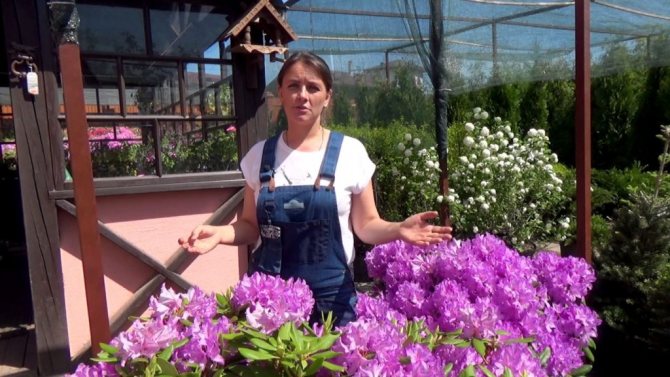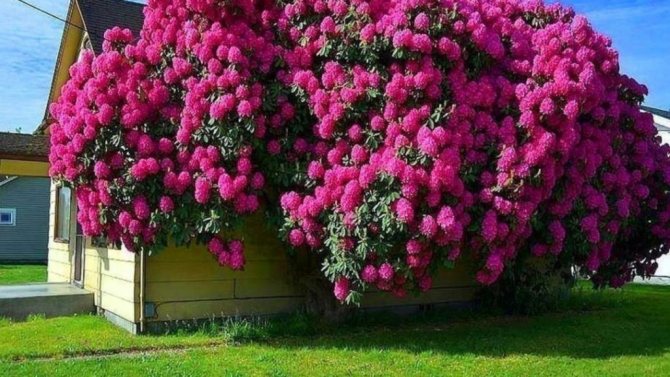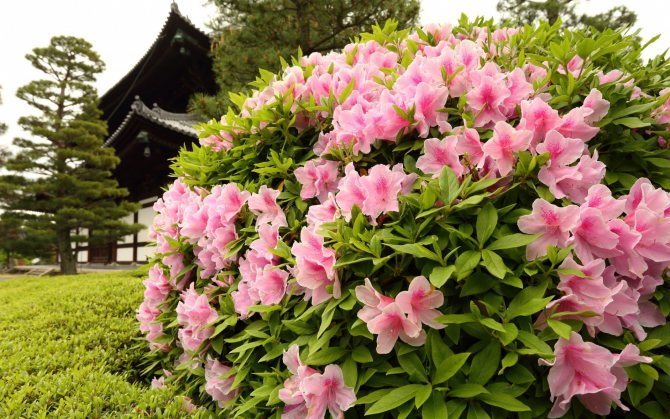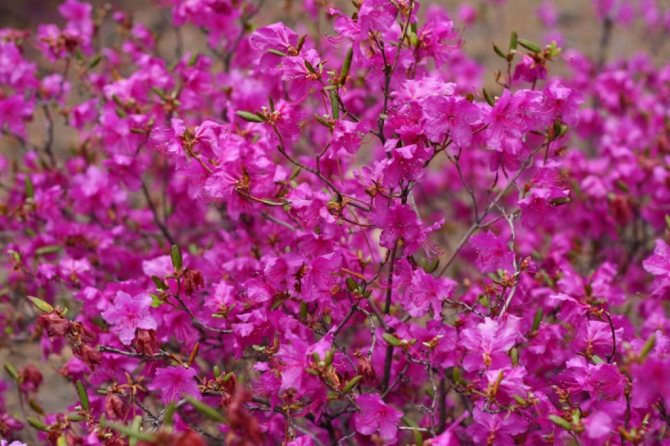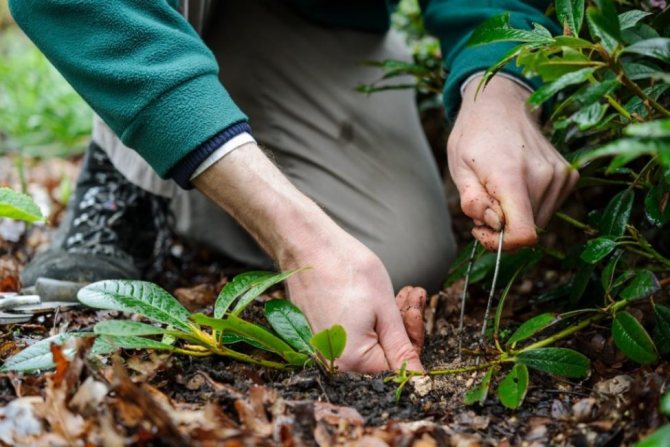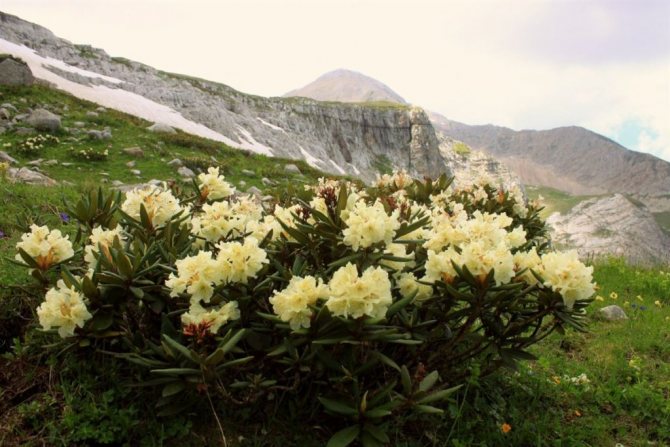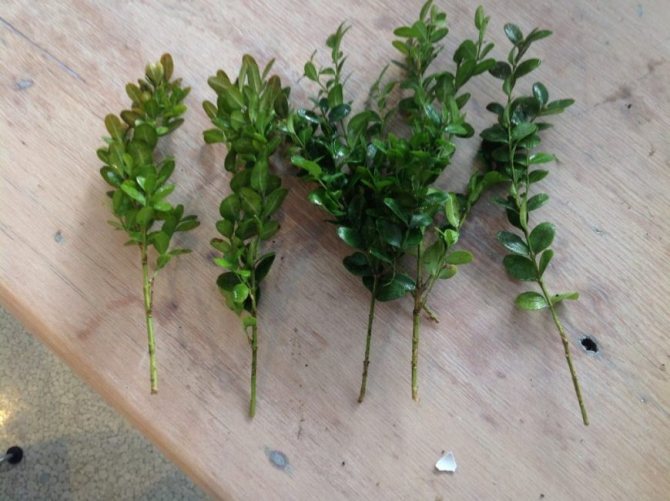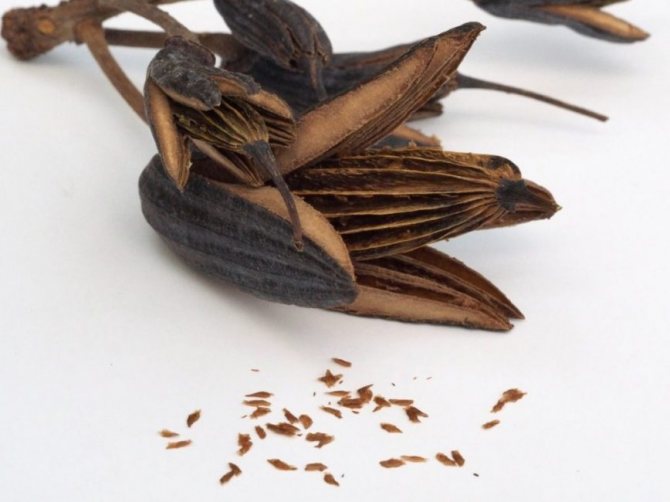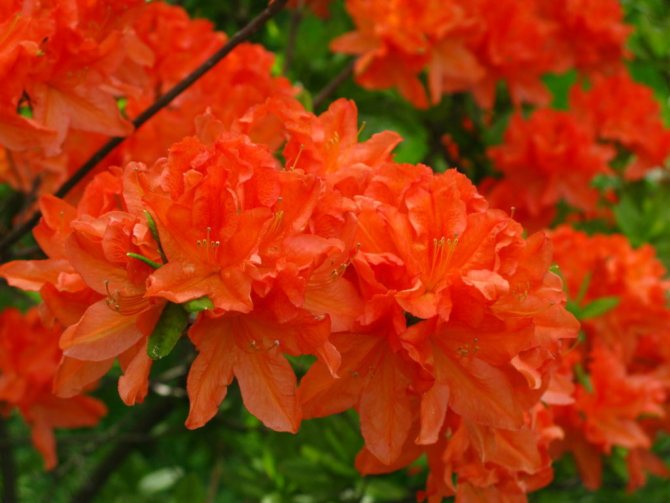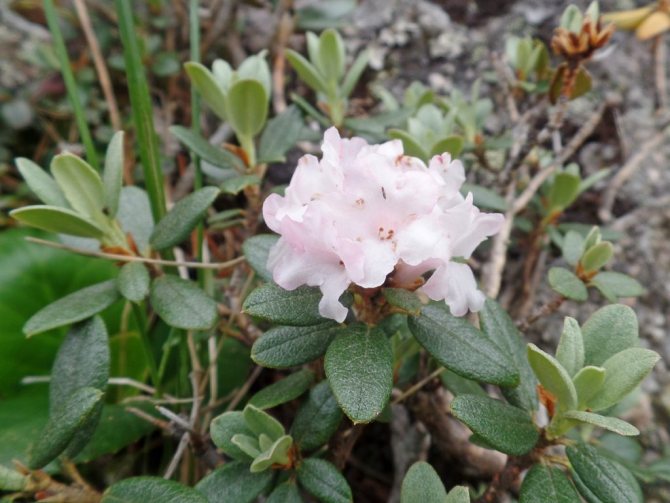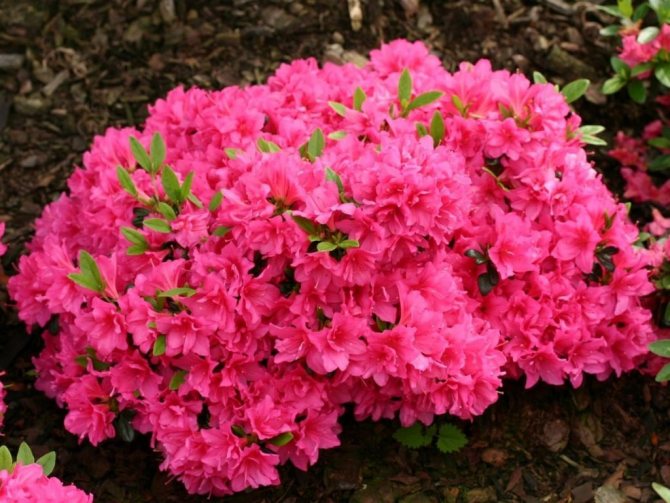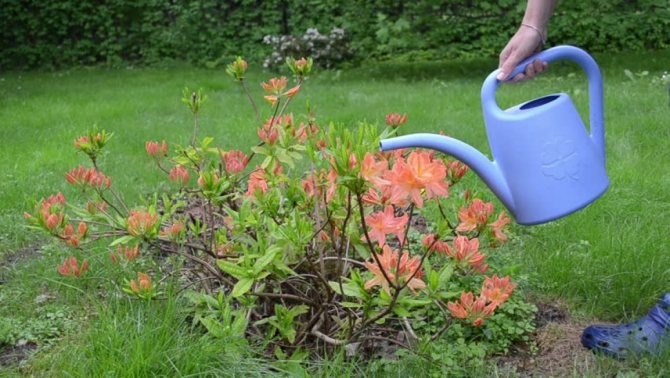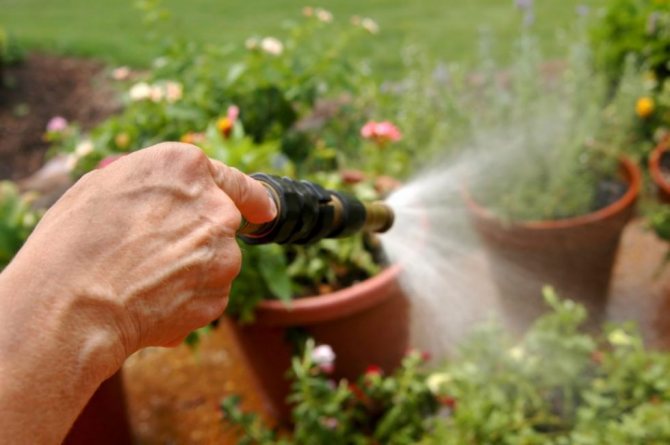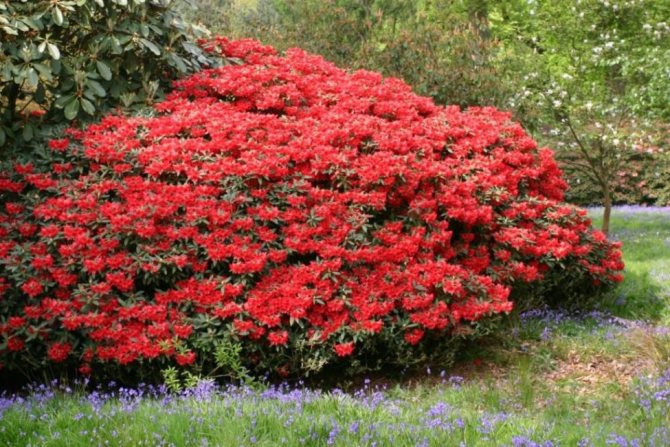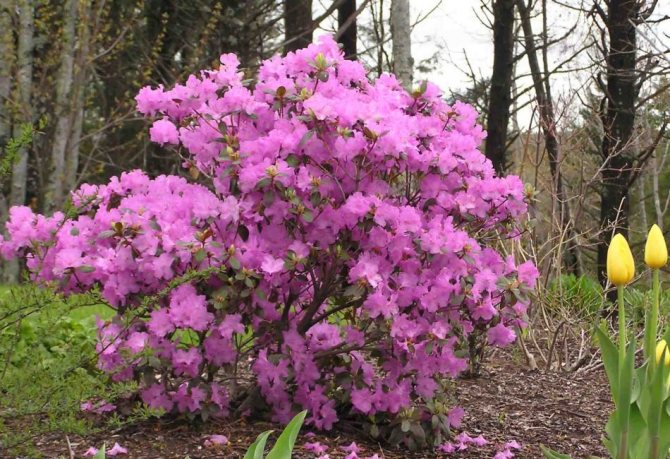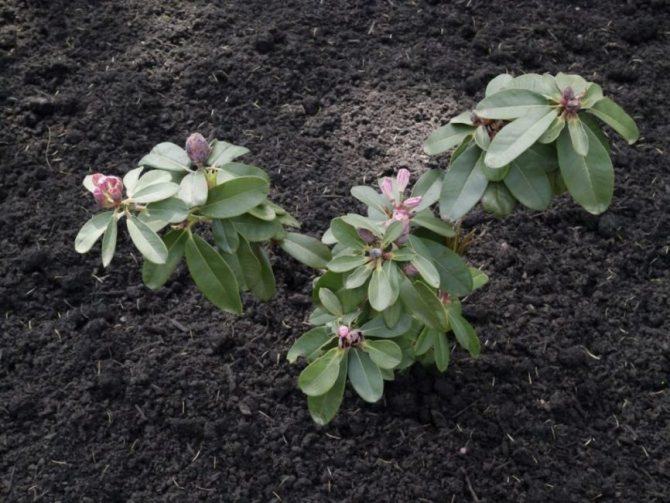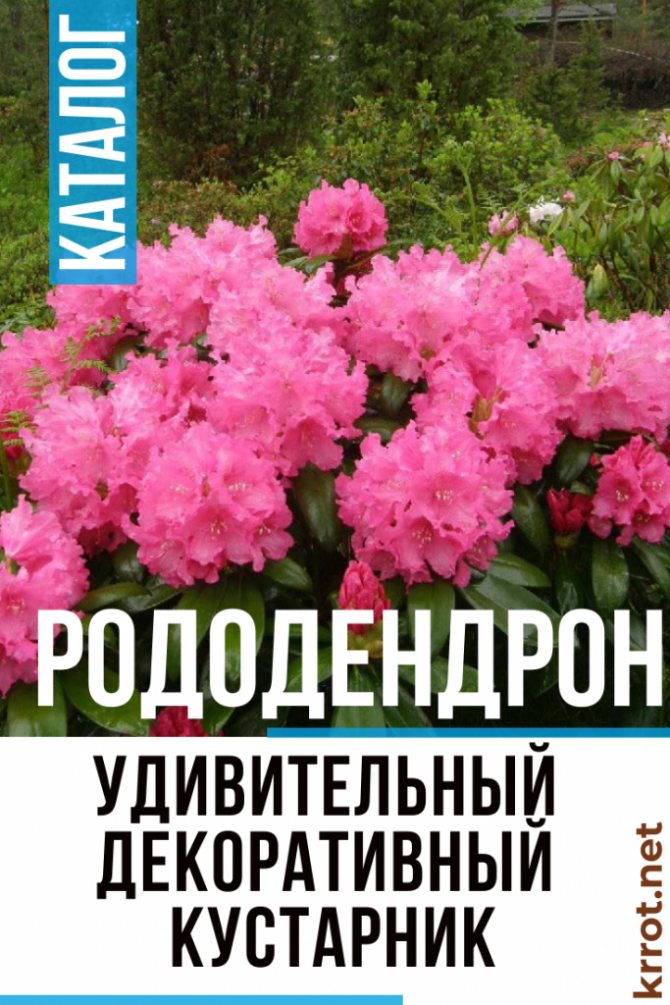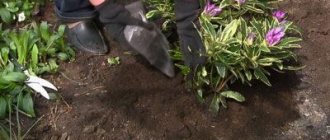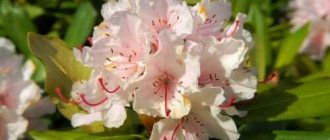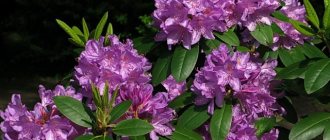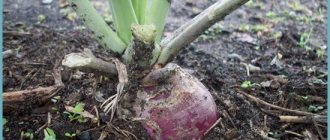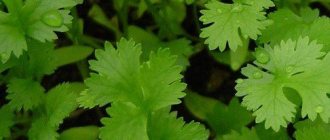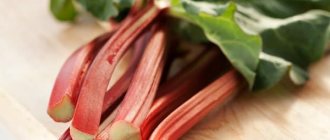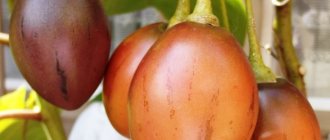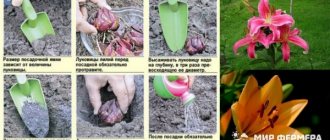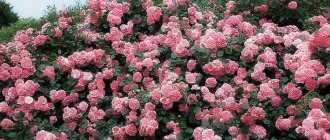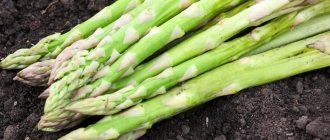This extraordinarily beautiful ornamental shrub is the very first to bloom in the garden. There are about a thousand species of rhododendrons in nature. Most are thermophilic, evergreen shrubs that grow in North America and Southeast Asia.
On the territory of our country, only frost-resistant species can grow that can withstand our harsh cold winters. One of them is the Daursky rhododendron, which is also popularly called the wild rosemary.
It is a deciduous shrub that can be found naturally in different regions of Russia. It is able to withstand winter frosts down to minus 42 degrees. However, its flowering is rather modest and lasts no more than 10 days.
Canadian and American breeders have succeeded in breeding several varieties of the evergreen frost-hardy rhododendron, stunning in their beauty. Its lush large inflorescences amaze with the richness and brightness of colors.
They are fully consistent with the name of the shrub, because "rhododendron" literally means "tree covered with roses". It is the bouquet of large roses that resembles each inflorescence of these varieties. In addition, they exude a wonderful, delicate aroma. After all, it is not for nothing that the “standard” of a delicate smell - azalea - is also one of the varieties of rhododendron.
North American varieties of rhododendron very quickly gained popularity in the domestic market, since, with extraordinary decorativeness, they perfectly tolerate winter frosts down to minus 34 degrees.
In this article, we will tell you how to grow an evergreen frost-resistant rhododendron on your site and how to care for it.

Description of rhododendron: varieties and varieties
The genus of rhododendrons is quite extensive - more than 1,000 species, which include various varieties of this wonderful plant. The natural area of distribution of rhododendrons is limited to the eastern countries: China, Japan, Korea, the Himalayas; some plant species are found in the Caucasus, North America, northern Africa and Australia. In European territory, two varieties of rhododendron grow in the mountainous regions of Germany.
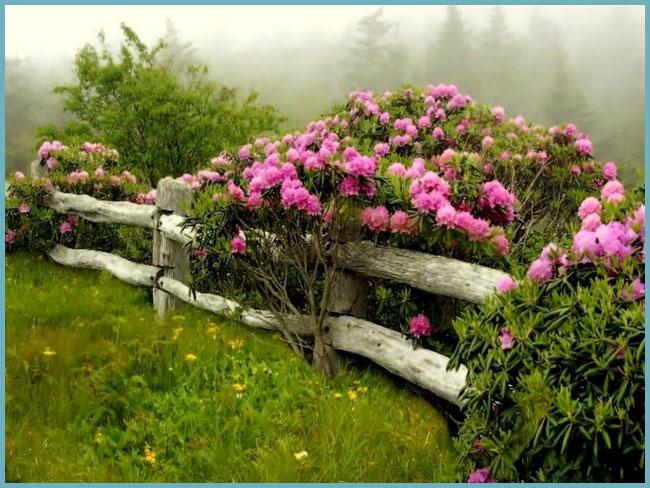

Rhododendron is a magnificent plant with a long flowering period
The culture refers to flowering deciduous or evergreen shrubs of the heather family. The branches of the plant can have smooth bark or pubescence. Leathery, dark green small ovoid leaves are sometimes pubescent. Bell-shaped flowers, funnel-shaped, simple and double. The color of the petals varies depending on the variety: white, pink, lilac, red, purple. Modern varieties of rhododendron are yellow and orange in color. Numerous small seeds ripen in capsules.
Rhododendrons, the cultivation of which on the territory of Russia is most acceptable, is limited to 26 species belonging to three groups of plants.
- Evergreens are tall shrubs that do not shed their dark leathery foliage even in winter. Large flowers are painted in different colors and tones. Growing evergreen rhododendrons in the open field requires compliance with a number of necessary rules: plants are placed in places with diffused shadow; the soil for them should include a large amount of peat.
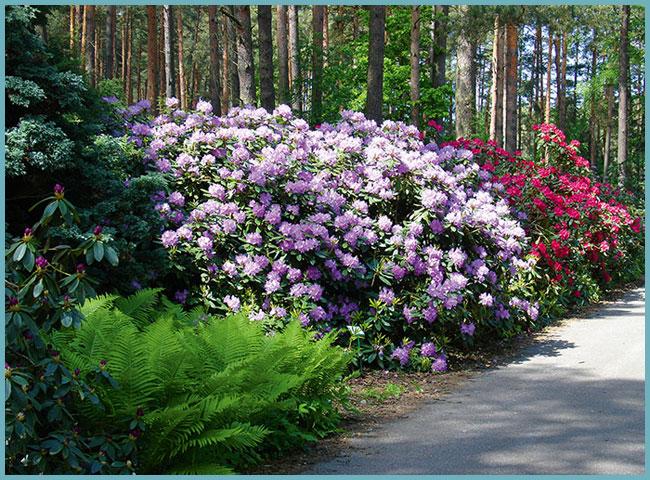

Rhododendron evergreen
Tip: It is important to choose the right neighborhood for evergreen rhododendron species, especially when decorating territories in landscape design. It can be all types of conifers, heather, ferns grown in the open field.
- Intermediate (semi-evergreen) - low shrubs that winter well under a layer of snow. The plant is characterized by a compact form, a huge number of flowers during the flowering period. In winter, most of the leathery leaves fall off, leaving only the whorl of leaves at the ends of the branches, from the center of which new foliage grows.
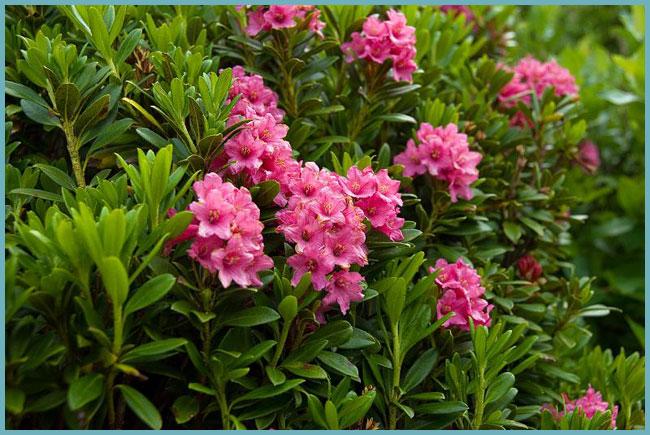

Semi-evergreen rhododendron
- Deciduous - rhododendrons of this group are most adapted to the conditions of the Russian climate. The cultivation of these plants is not difficult, and the plants themselves do not need to specially adapt in the winter. Blossoming in spring, repeated in autumn.
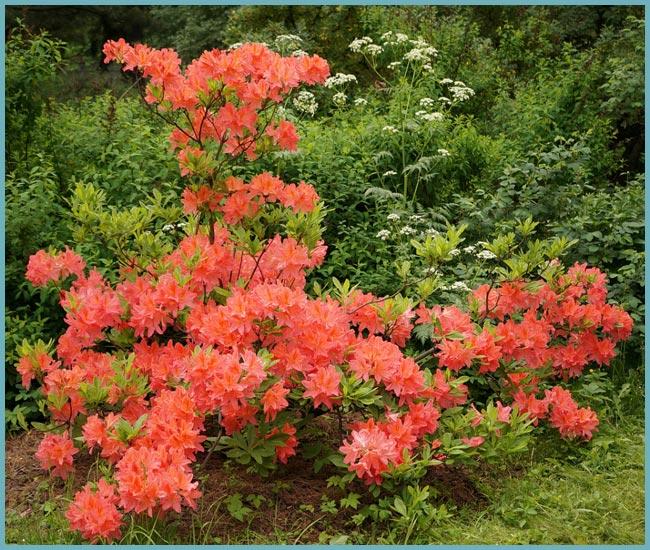

Deciduous rhododendron, grade "Fireworks"
Yakushiman rhododendron (Rhododendron degronianum ssp.yakushimanum)
A popular mountain species that came from Japan to Europe in the 30s of the twentieth century. A compact shrub up to 1 m high and 1.5 m in diameter, from the end of May it is completely covered with dense numerous inflorescences.
The apple blossom effect is achieved through bright pink buds and flowers ranging from pale pink to white.
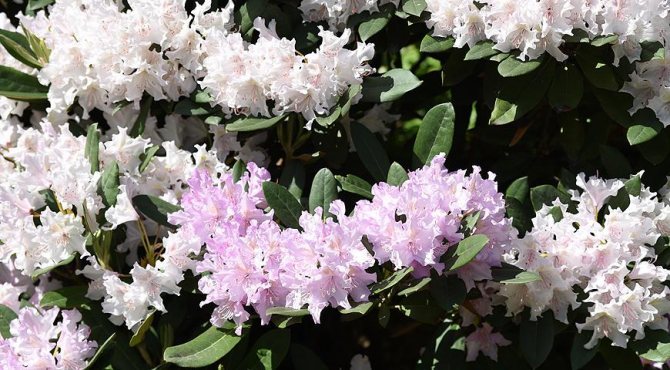

Yakushiman rhododendron
Many varieties overwinter reliably and bloom well, such as Ken Janeck, Mist Maiden, Koichiro Wada, Yaku Angel.
Planting a plant
Rhododendron: planting and caring for plants in compliance with agrotechnical rules - plant transplantation is allowed in spring and autumn. In autumn - in any of three months, in spring - in warm, well-established weather, when the soil is no longer frozen (usually April or May).
The choice of a place for planting a plant must be carried out with special care. Planting rhododendrons should be protected from the prevailing wind and direct sunlight. It is important that the shrub is accessible for viewing, then the decorative appearance of the plant during the flowering period will decorate the territory and please the eye.
Tip: Before planting the plant from the container into the open ground, it should be thoroughly saturated with water.
A planting hole for rhododendron bushes is prepared based on the actual size of the root system, and should be 2 times larger in volume. The natural soil should be removed completely. To plant a plant, it is required to prepare a special earthen soil consisting in equal parts of heather soil; peat; garden soil or leaf humus; rotted manure; needles (pine).
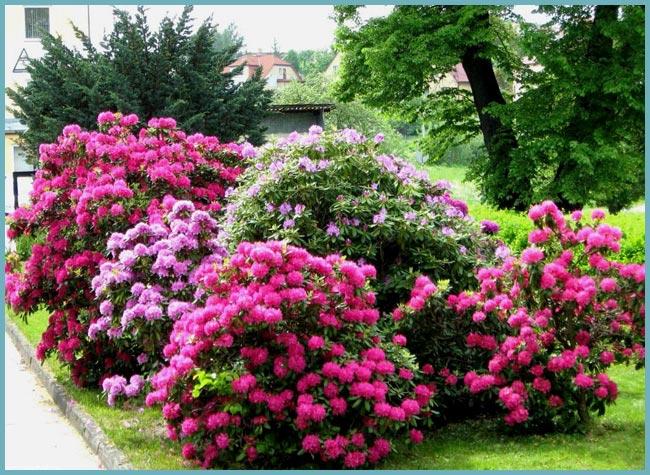

It is very important to plant the plant correctly, then it will quickly take root.
The prepared pit is filled with a mixture, a place is prepared in it for planting a rhododendron bush, which must be placed strictly vertically. The soil around the root system of the plant must be tightly squeezed - the formation of voids and "pockets" in the planting soil is not allowed. With a high level of groundwater, it is necessary to provide for the laying of a special drainage layer at the bottom of the pit. After planting, the top layer of soil should be mulched with peat chips.
Rhododendron: proper watering
Watering the planted plant is carried out at the time of planting, - abundant, sufficient to moisten the soil to a depth of 20-30 cm. Subsequent watering of the rhododendron should be done with soft, acidified water, with complete soil moisture.
Tip: When planting a plant with buds, it is necessary to remove most of them.
Varieties for different climatic zones
The rhododendron plant, the description of which provides an opportunity to study the characteristics of domestic selection, is able to be cultivated in all regions of the country. Professional gardeners recommend planting group beds with an early flowering period.
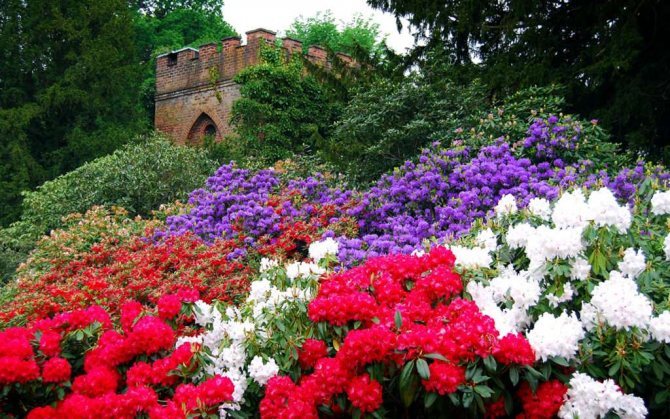

For medium climatic regions, any varieties that are resistant to diseases and pests are suitable.You can choose varieties of American selection that can withstand heat and frost. Aurora, Laika, Dagmar - representatives of the Smirnov variety are grown throughout the country. Album Novum varieties, Lumina are characterized as frost-resistant, but in places where the winter is little snow and cold, they require shelter for the cold period.
In urban growing conditions, preference is given to varieties Mandarin Lights, Lemon Lights, Golden Ligths and hybrids Feuerwerk and Fireball, Cecile, Golden Sunset, Persil, Oxydol.
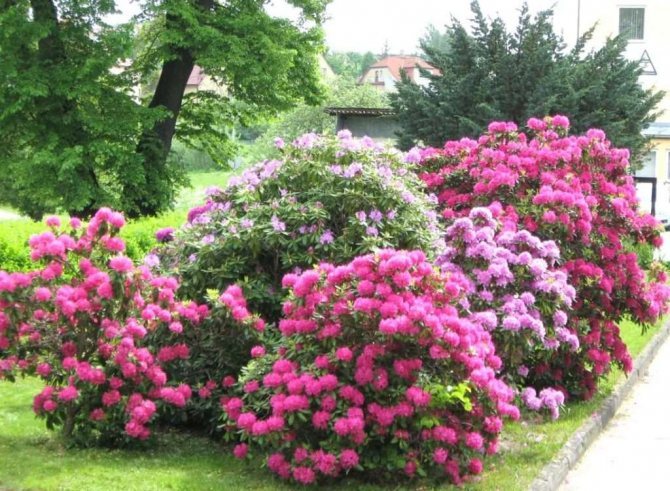

Plant care
A transplanted plant requires attention and careful care. In addition to regular abundant watering, the rhododendron needs spraying over the foliage, especially when planting in late spring. The soil needs to be mulched to maintain sufficient moisture. When mulching, you should choose options that increase the acidity of the soil.
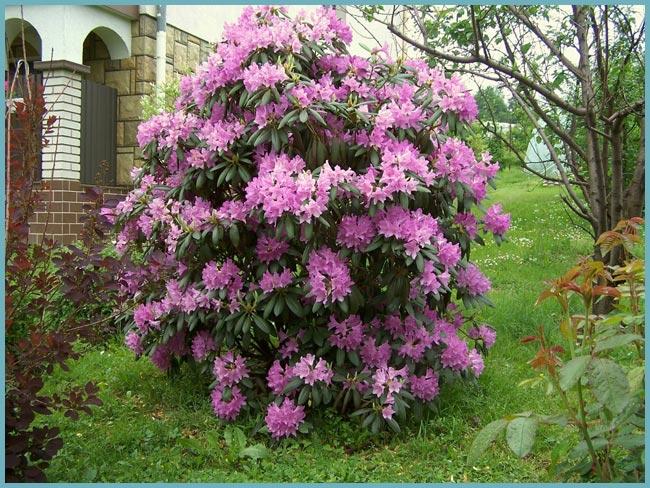

The plant needs regular watering
The root system of rhododendrons consists of delicate, fine hairs, similar to matted hair, so loosening the soil, especially deep, should be excluded from flower care measures. Weeds growing next to the plant need to be removed periodically.
The appearance of the plant will immediately inform about the lack or excess of water - the leaves of the rhododendron will begin to turn yellow and fall off. Watering is required in sufficient quantities, but without overflow, this is one of the main rules of crop care.
To ensure proper care of the rhododendron, it is important to timely prune the overgrown bushes. Places of cuts to prevent infection of the plant are covered with paint or garden varnish.
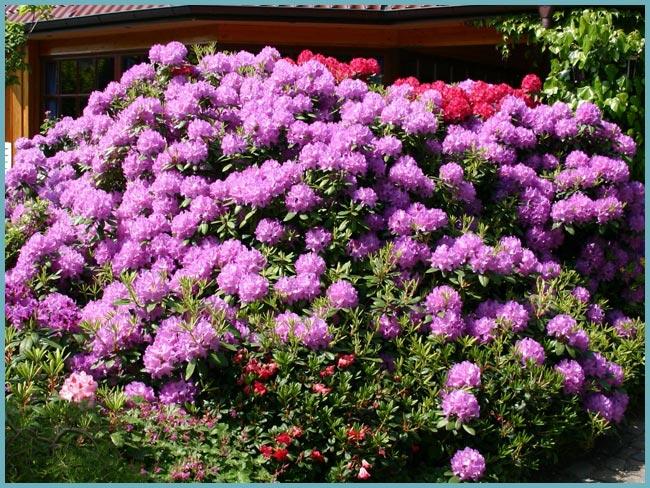

Bushes need to be pruned periodically
Compliance with simple plant care requirements will allow you to grow a wonderful flowering bush.
Useful video
You will learn how to achieve a lush flowering of rhododendron from the video:
Helpful information You can read more on the topic and learn more about the azalea / rhododendron:
- Azalea breeding methods at home: growing rhododendron
- Beauty in your home! How to breed indoor hydrangea at home?
- Azalea is a green beauty in your house
- Delicate clouds land in June: rhododendrons (azaleas) in garden culture
If you find an error, please select a piece of text and press Ctrl + Enter.
Fertilizing and feeding rhododendron
In the first year, the transplanted plants already require careful fertilization, which is applied in a highly diluted form, in small portions. The plant itself will signal the need for fertilization: it will stop growing, discard the foliage or the leaves change color, the formation of flower buds will stop.
Organic fertilizer for feeding rhododendron bushes - semi-decomposed manure, which must be infused in water. Top dressing is carried out with an aqueous solution of manure. To increase the formation of flower buds, as well as to extend the flowering period, granular superphosphate, or double superphosphate, is used, which is scattered over the moist soil under the plants. The plant is also useful for fertilizing with microelements, - fertilizers are applied in the form of watering or spraying the green mass of the bush. Intensive fertilization of the bushes is required until the end of August.
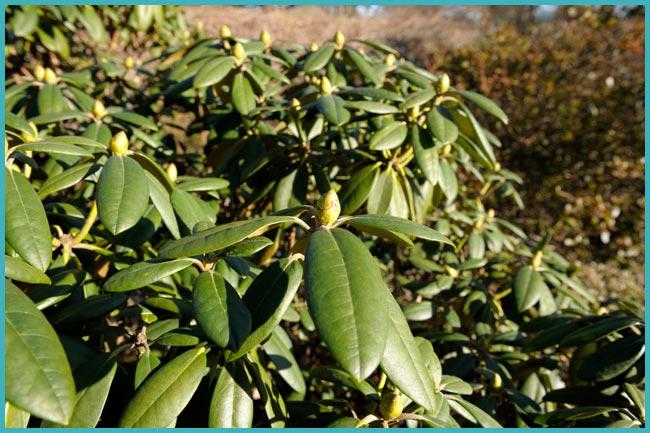

Rhododendron before flowering
Rhododendron obtusum
Semi-evergreen cushion shrub. It blooms in the second half of May - early June. The flowers are about 3 cm in diameter. The leaves are completely preserved under deep snow, in winters with little snow they dry up partially.
Hybrid varieties are called on the market "Japanese azaleas" and even give them the Latin name Azalea japonica, which is actually one of the synonyms of the Japanese rhododendron, a completely different species. The varieties have the same compact habit, but varied colors.
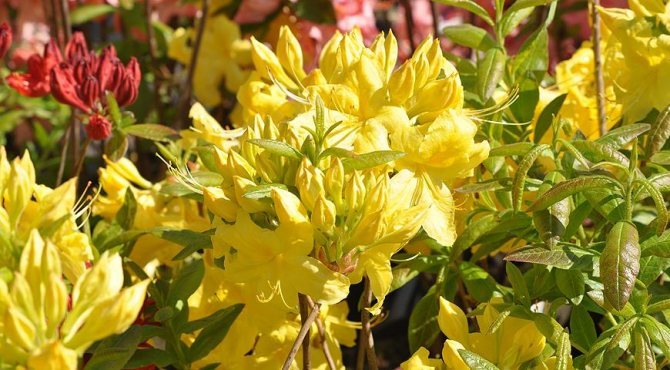

Rhododendron Anneke
The cultivar is distinguished by abundant flowering of bright yellow flowers with long stamens. Medium-sized deciduous shrub up to 1.4-1.6 m high with a spreading crown. Blooms in late May - early June, simultaneously with the opening of the leaves.
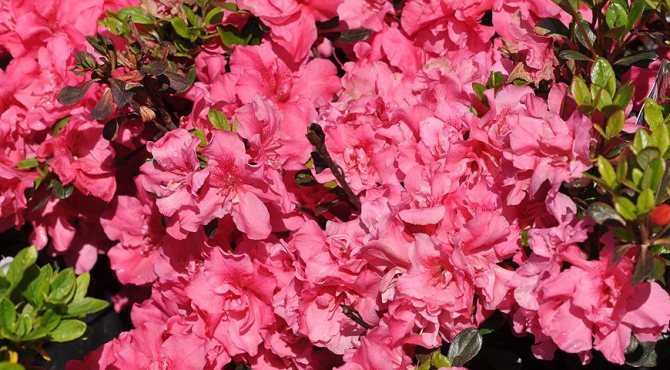

Reproduction of rhododendron
Growing rhododendron involves plant propagation by layering and seeds, dividing the bush, grafting, cuttings.
Seed propagation Is a great way to get plants with improved traits. Sowing is carried out from the end of December to the end of March. The second period suitable for seed reproduction of rhododendrons is the end of November.
Sowing seeds is carried out in shallow bowls or boxes filled with a nutrient mixture of peat, sand, coniferous and sod land, taken in equal proportions. The seeds are pre-soaked for a day. Sowing is carried out on the top layer of the soil, without embedding deep into the soil. The sowing is moistened by spraying. It is required to provide seedlings with a 12-hour illumination with fluorescent lamps. The timing of seed germination depends on the variety. The first flowering of seedlings is possible in 3-4 years.
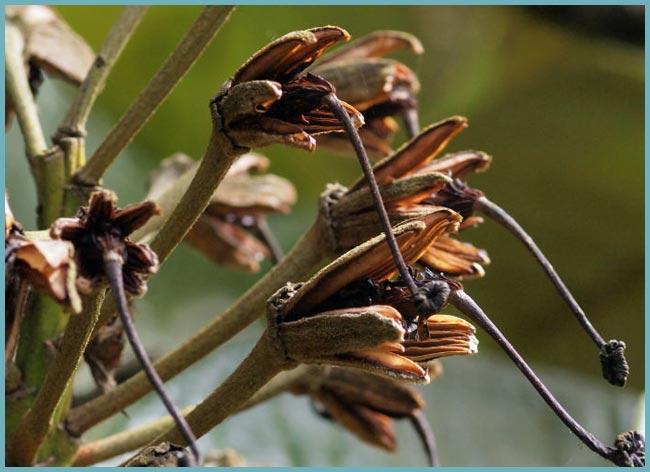

Rhododendron seeds
This method has its advantages, but with seed reproduction of rhododendrons, it takes up to 5-6 years to obtain full-fledged plants.
Faster new plants can be obtained with vegetative methods of culture propagation: cuttings, division of the bush, rooting of cuttings.
Rhododendron yellow (Rhododendron luteum)
Introduced into culture at the end of the 17th century. Branched deciduous shrub up to 1–1.5 m tall, blooms in late May (until mid-June). Flowers are yellow or orange, up to 5 cm in diameter, with a strong aroma, collected in inflorescences of 7-12 pcs. Flowering occurs simultaneously with the appearance of leaves. Winter hardiness is high; in severe winters, annual shoots can freeze over. There are many stable ornamental garden forms.
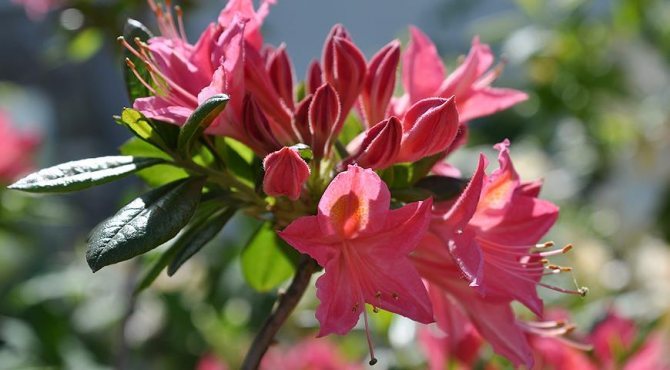

Rhododendron yellow Jolie Madame
Diseases and pests
Fulfillment of the requirements for agricultural technology of rhododendrons guarantees excellent growth and development of plants. However, repeated waterlogging or overdrying of the soil, alkaline reaction of the soil, sunburn of leaves, can provoke a surge in crop diseases.
Plants can be damaged by spots, rust and chlorosis. Disease control measures - improving the conditions for keeping plants, the use of special means to combat diseases. Often rhododendron diseases are caused by pathogenic fungi: gray rot, fusarium, late blight.
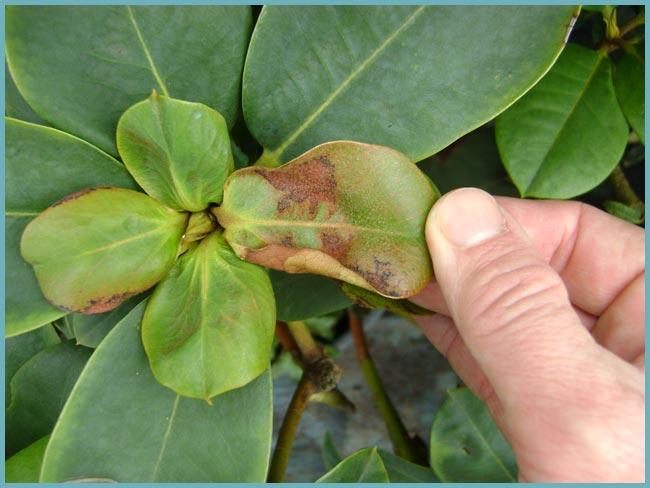

Spotting - a fungal disease of the rhododendron
Pests that damage rhododendrons: slugs and snails that eat young leaves and buds. The collection of these pests is done manually. In addition, the plant is harmed by: bedbugs (rhododendron), spider mites, mealybugs, weevils, scale insects, rhododendra fly. Pest control is easy with systemic insecticides.
Rhododendron catawbiense (Rhododendron catawbiense)
Evergreen shrub, up to 3 m tall, with a wide loose crown. Blooms in June. The flowers are lilac with green specks, collected in inflorescences of 15–20 pcs. One of the most hardy evergreen rhododendrons.
Popular varieties of Katevbinsky rhododendron:
Nova Zembla is a bush up to 2.5 m tall. The flowers are ruby at the beginning of flowering, then brighten.
Catawbiense Boursault is a 1–1.5 m high bush. The buds are dark purple, the flowers are dark purple with a greenish yellow spot.
Rhododendron: combination with other plants
Planting plants in combination with conifers and a group of heathers has a positive effect on the development of rhododendrons. It should be remembered about the height of the rhododendron bush. Low cultivars should be located away from the dense shade of mature trees, but avoiding direct sunlight.
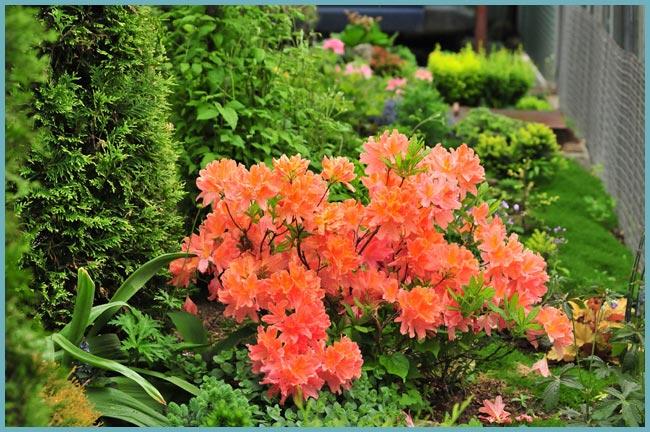

Blooming rhododendron perfectly sets off conifers
An excellent combination is observed when located next to the rhododendrons of shade-loving ferns and host.
Japanese Rhododendron (Rhododendron japonicum)
Deciduous, highly branched shrub, 1–1.5 m high, grows naturally in the mountains of Japan. Blooms from mid (late) May to mid June. The flowers are 6–8 cm in diameter, in the natural form they are usually red, orange or yellow. The leaves are very bright in autumn, with red, orange and yellow tones.
In foreign catalogs, it is usually listed among garden (deciduous) azaleas.
They also include hybrid varieties with many Oriental and American species.
The most popular bands are KnapHill, Exbury and Mollis. These are plants up to 1.5 m in height of all kinds of colors. Winter hardiness varies, but many varieties are good.
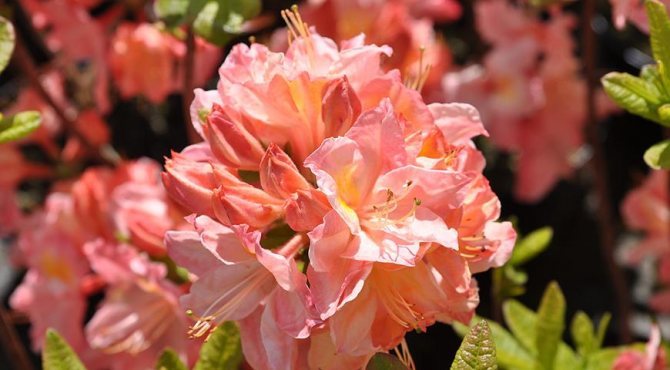

Rhododendron Hybrid Cecile, Knap Hill-Exbury Hybrid Group
Deciduous shrub 1.5-1.8 m high. Leaves are crimson-red in autumn. Blooms before foliage bloom in May-June. Flowers up to 8 cm in diameter, light pink when blooming, then salmon pink with a yellow center.
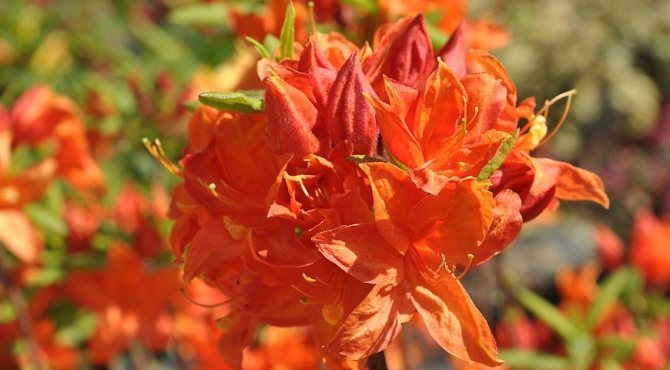

Rhododendron Hybrid Glowing Embers, Knap Hill-Exbury Hybrid Group
Deciduous rhododendron. Leaves are bright green, yellow, orange or red in autumn. Orange flowers bloom to leaves in May-June.
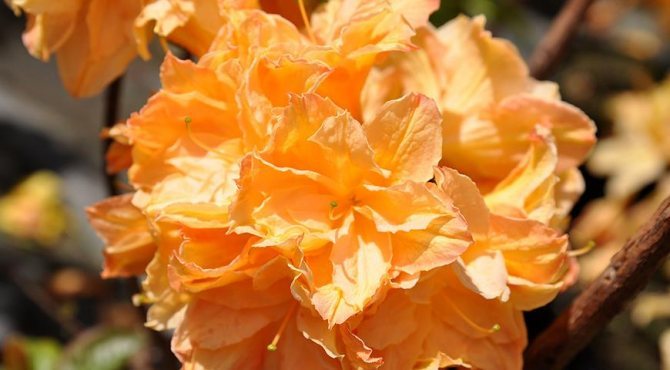

Rhododendron hybrid Golden Sunset, group Knap Hill-Exbury Hybrid, (England, 1948)
Blooms before foliage bloom in late May - early June. The flowers are yellow with an apricot spot and throat flowers. The leaves are bronze when blooming, dark green in summer, crimson-red in autumn, then turn yellow.
Rhododendron in landscape design
In landscape design, rhododendron is an indispensable attribute for planting in partial shade. The huge advantages of the plant are its long and very decorative flowering. Rhododendrons are widely used in the design of heather gardens, as an addition to the planting of pine groves. The plant looks great in mono plantings.
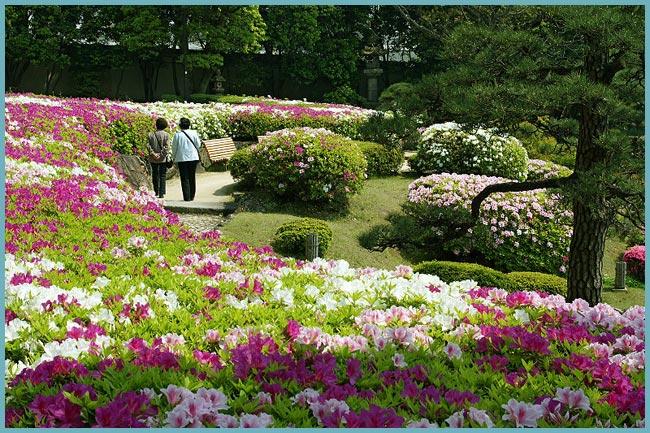

Rhododendron in landscape design
Low-growing varieties of rhododendrons are planted near alpine hills, in mixborders and in decorative flower beds.
How to transplant a rhododendron to a new location
Since it is rather difficult to take good care of a rhododendron in mid-latitudes, the plant may not look so bright next year. An unfortunate location or freezing winters can also greatly affect the lushness and regularity of a rosewood.
Transplanting a young plant will help correct the situation. This is done in early spring or early autumn. It is important to choose a period when the weather is cool enough and the air humidity is high.
Advice! When transplanting, you can mark the branches of the plant to the cardinal points. This will help to properly position the bush in a new place so that its "move" is not so stressful.
Types of rhododendron: photo
Prevention of various problems
- From the direct sun, burns appear on the leaves - brown spots. Requires shading in summer and shelter in winter.
- If after winter the leaves do not unwind, watering is needed.
- Excessive moisture can also harm the rhododendron Fantastic - swampy soil provokes the appearance of rot. Watering needs to be adjusted.
- Lack of nitrogen fertilizers retards the development of the bush.
- Violation of the acidity of the substrate leads to chlorosis of the leaves. It is required to reduce the doses of calcium and copper fertilizers, it is required to acidify the substrate.
Other hybrid varieties are especially popular: Cunninghams White, Japanese, Listopadny, Pontic, The Hague, Daursky, Schlipenbach, Katevbinsky, Pjm Elite and Polar Night. Read about them on the pages of our site.
Bloom
When and how
Early varieties bloom in April, but generally the flowering time is late May - early June. They bloom generously, profusely, some varieties can bloom a second time, in mid-autumn.
Important: to prolong flowering, you need to constantly clean the flower from already wilted inflorescences.
Before and after
During bud formation, the temperature should be reduced to 10 ° C... During flowering, the temperature can be increased by 5 degrees, while good lighting is needed. After flowering, young, elongated shoots are cut off for further propagation. It is recommended to remove old inflorescences.
Do not spray during the active flowering period - ugly spots appear on the flowers.

